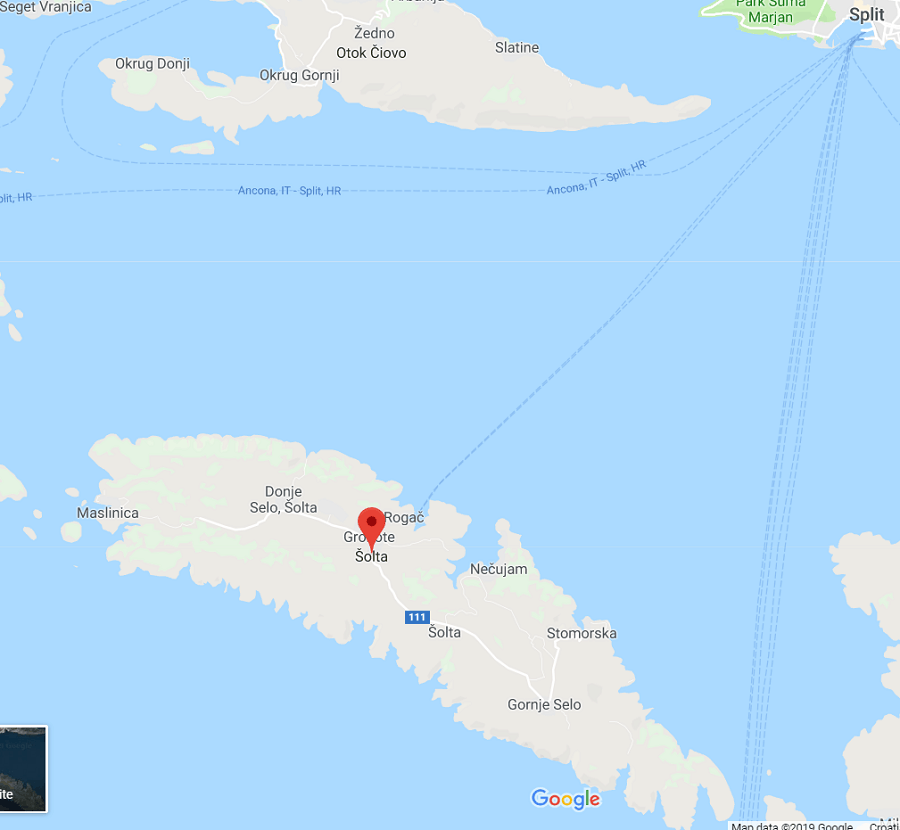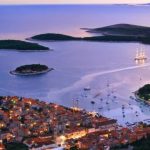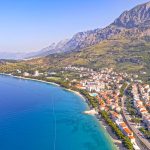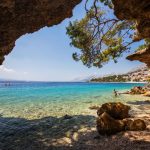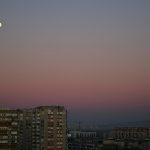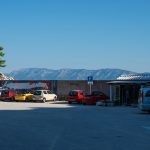Lesser known and lesser visited than its more famous neighbours Hvar and Brac, the island of Solta is a true natural paradise less than an hour from Split. An island of wine, honey, olive oil, beaches and lots of other natural goodness. Discover it before the masses do!
- How to get to and around Solta
- Solta beaches: an introduction
- Meet the towns and villages of Solta
- Where to stay on Solta
- Where to eat on Solta
- Things to do on Solta
- Wine on Solta: Meet Dobricic
- The olive oil of Solta
- Honey heaven
- Solta gingerbread
- Mrduja and the tug of war with Brac
- Legend of Queen Teuta and her fort in Senjska bay
- Cuvita Owl
- For more information
How to get to and around Solta
Solta is just 9 nautical miles from Split, making it one of the most accessible Dalmatian islands. Despite this, most tourists overlook it in favour of more fashionable neighbours like Brac and Hvar. Which is good news for those looking to escape…
You can reach Solta in an hour by ferry or just 15 min speedboat ride and explore its beaches.
Its name originates from the Greek name Olyntha. This means ‘unripe fig’ and until today, locals have kept their long-nurtured agricultural traditions and legends. There is a local saying “Dopala te Solta!” And the meaning of this is: “I hope you end up on Solta!” This meant it was a bad thing to move to Solta because of the hard life you would have there. The reality, of course, is that life on Solta is rather pleasant.
The first ferry from Rogac leaves at 05:30 and the last one from Split is at 20:30. But you can check out the latest timetables from Jadrolinija for the ferry.
There is also a daily catamaran service between Milna on Brac, Rogac and Split.
Once on the island, there is a bus service from Rogac, which services Necujam, Stomorska, Maslinica, Grohote, Gornje Selo and other villages. You can check out the timetable here.
Solta beaches: an introduction
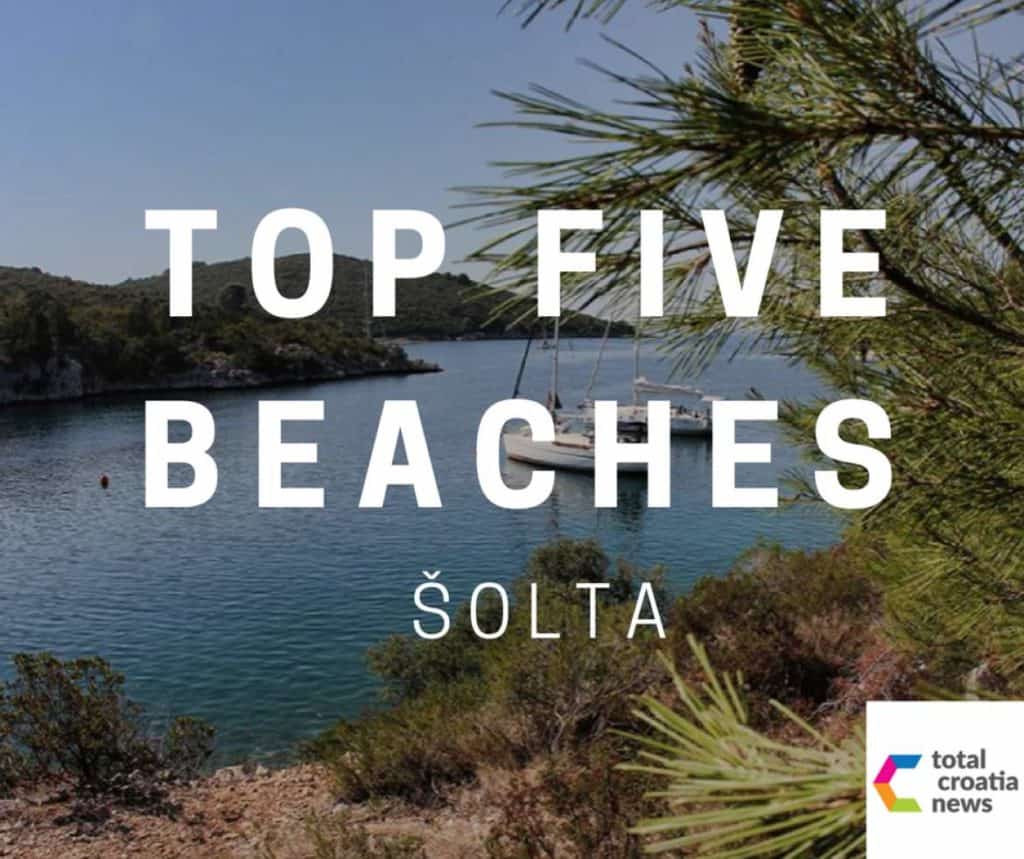
Looking to escape the crowds and enjoy an idyllic pristine bay and The Mediterrean as It Once Was? You have come to the right place!
While other destinations are suffering from over-tourism, Solta maintains and inner calm. A little more off the beaten track than its more fashionable neighbours, the locals like it that way. And if you are a beach lover who wants to relax, you will too. Here are the TCN top 5 beaches on the island.
Meet the towns and villages of Solta
The population of the island is about 1,400 permanent inhabitants. Meet the most important settlements, courtesy of an introduction from the Solta Tourist Board:
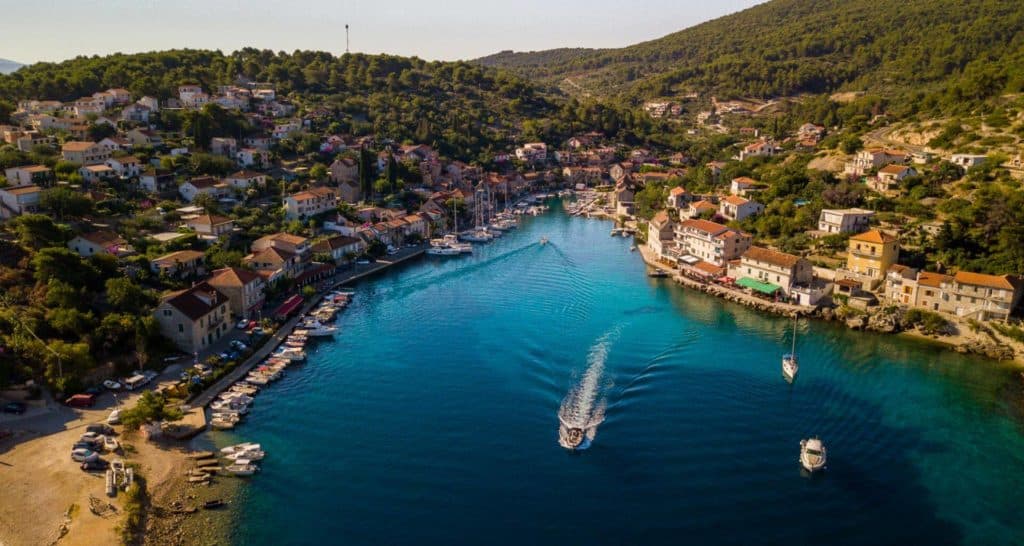
Stomorska
Stomorska is a village on the north-eastern part of the island. It is 12 km away from the main port of Rogac.
This small fishermen’s village has only 250 residents, but it offers accommodation for about 500 tourists. The lucky few who manage to book an apartment in the summer season will enjoy the hospitality that accentuates the appealing old-times spirit of this tourist destination offering everything a modern tourist needs.
The view of the picturesque waterfront, stunning beaches and fishermen selling their catch in the early morning right by an exclusive yacht nearby, seems like something one can only see in a postcard. The place is a perfect blend of opposites: old stone houses, sailing boats and ‘kaici’ (small wooden fishing boats) docked only a few metres away, Dalmatian taverns and modern cafes.
The beaches stretch along both the left and right side of the bay, and anyone can find their perfect place in the sun – an ideal spot for sunbathing and diving in the hot summer days. And Stomorska’s rustic charm combines with the hospitality of its inhabitants to sweep you off your feet.
Stomorska is the island’s oldest coastal settlement that had been the home of skilled seamen who owned sailing boats and used them to transport wheat, lime and other products at the time when Solta had to pay levies to Split. Nowadays, sailing boats are more popular for cruise holidays in the Adriatic.
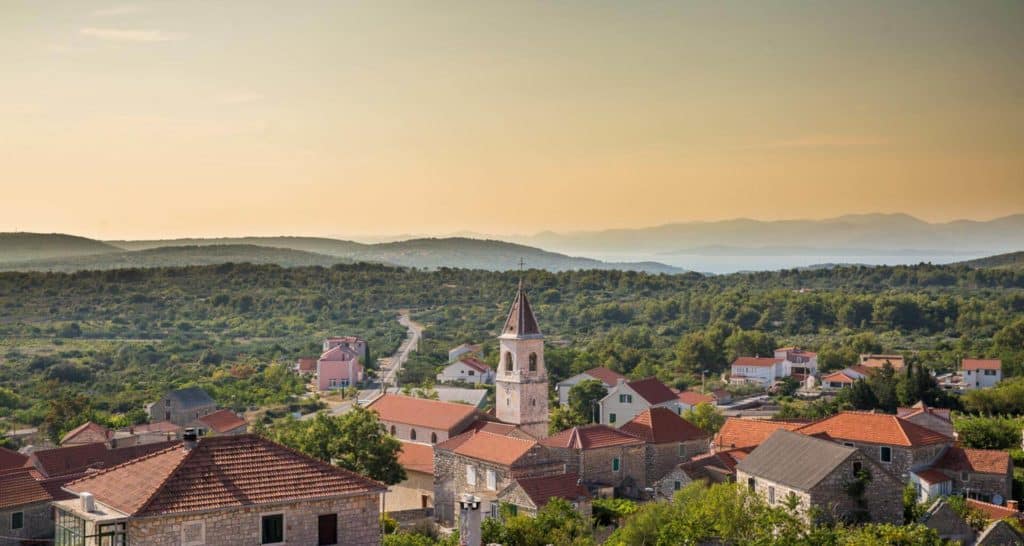
Gornje Selo
Gornje Selo is a small village at an altitude of just above a hundred metres. It is a typical example of Mediterranean architecture, protectively overlooking the rest of the island. The architectural integrity of the village with the church bell tower dominates all views, even when looking from the sea, i.e. from the Vis Channel, reflecting its environmental value.
Owing to a fertile land and the vicinity of bays on the southern side, farming, vine- and olive growing, and fishing have always been the main occupations.
Today, when walking through this hamlet with typical Dalmatian architecture, you can find houses restored to their original state, typical Dalmatian taverns and the essential part of the local tourist offer – family farms and an oil mill, where you can treat your palate to the award-winning flavours of oil, wine, olives and herbs turned into liqueurs. Do not hesitate to take a walk, explore and enjoy the village!
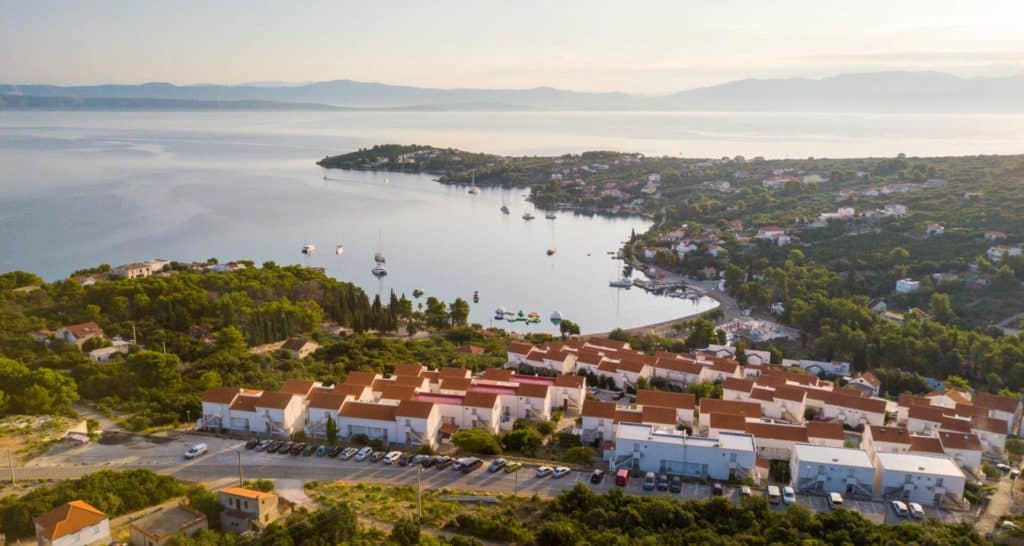
Necujam
Necujam is in the northern part of the island, just short of 9 miles from Split.
It is in the biggest bay on Solta and is the island’s youngest settlement, gravitating towards the central beach overlooked by a large apartment resort, owing to which Necujam was one of the most famous destinations on the Adriatic coast before the 1990s.
Its tranquillity and green vistas inspired some of Croatia’s greatest poets, namely Marko Marulic and Petar Hektorovic. The house where Marko Marulic was staying still stands in the very centre of the village.
Many consider Necujam the most beautiful bay of the island. It comprises eight coves: Bok Supetra, Šumpjivina, Podkamenica, Maslinica, Tiha, Bok od rata, Piškera and Supetar.
The construction of contemporary weekend houses and a tourist resort has turned Necujam into a modern tourist destination; however, one thing has remained unchanged through the centuries: its name.
Its Latin name Vallissurda or the Deaf Bay stems from the very size of the Necujam bay. Beautiful beaches on both sides of the bay and in the coves. And a long seafront promenade will enchant you any time of the year. The best option in the hot summer days is to find refreshment in the translucent, crystal clear sea and take a rest in the shadow of a pine wood. The astonishing nature is what makes this place a true paradise.
Marko Marulic described Necujam with the following lyrics:
“You know I live on an island, not too far away,
Just nine miles away from the town.
And if my friends wish to keep me company,
Or savour this blissful countryside peace,
In less than seven hours
A boat will bring them here, where I dwell alone.”
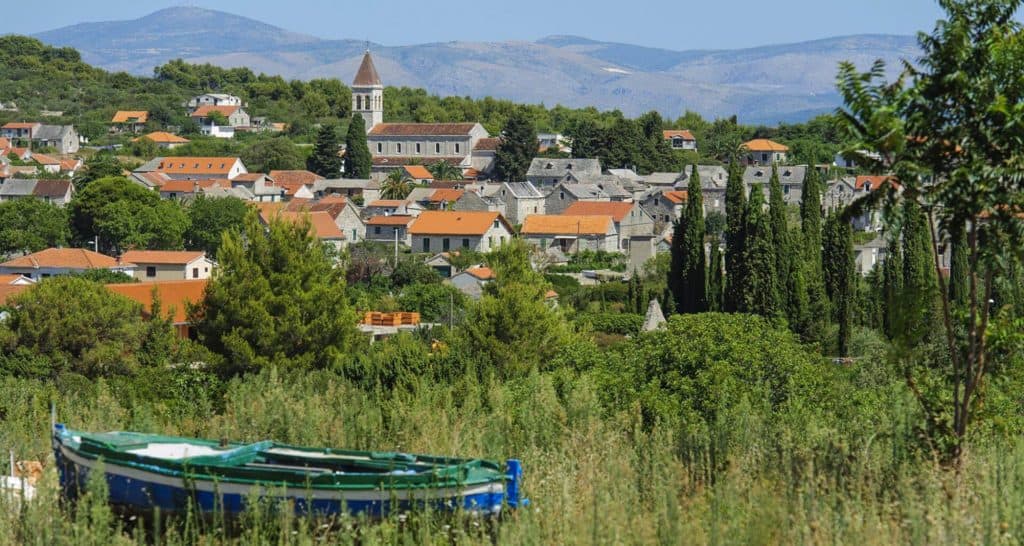
Grohote
Grohote lies on the edge of Soltansko polje, at the intersection of the road connecting Stomorska and Maslinica, the two farthest villages on the island, and leading to the port of Rogac.
Solta’s oldest and largest settlement has always been the economic and administrative centre of the island. This despite the fact that its inhabitants were mostly lime-burners, farmers and fishermen.
Municipal offices, a post office, a clinic with a helideck, a pharmacy, a volunteer fire department and a police station are among Grohote’s major public facilities.
The very centre boasts narrow, irregular alleys that close the residential buildings into partially separated units with atriums and taverns, and give away the old rustic Mediterranean charm that no one who walks through its stone alleys can resist.
These old and invaluable architectural gems contribute to the authenticity of the island setting, and this is why all reconstruction works are in a way to preserve its traditional architectural values. A number of scenes from the famous Croatian TV series Velo Misto, mostly in Grohote, give a true presentation of the island lifestyle.
Some of the more famous island painters like Eugen Buktenica, Marin Kalajzic, Dinko Sule and Vicko Buktenica grew up in these narrow alleys.
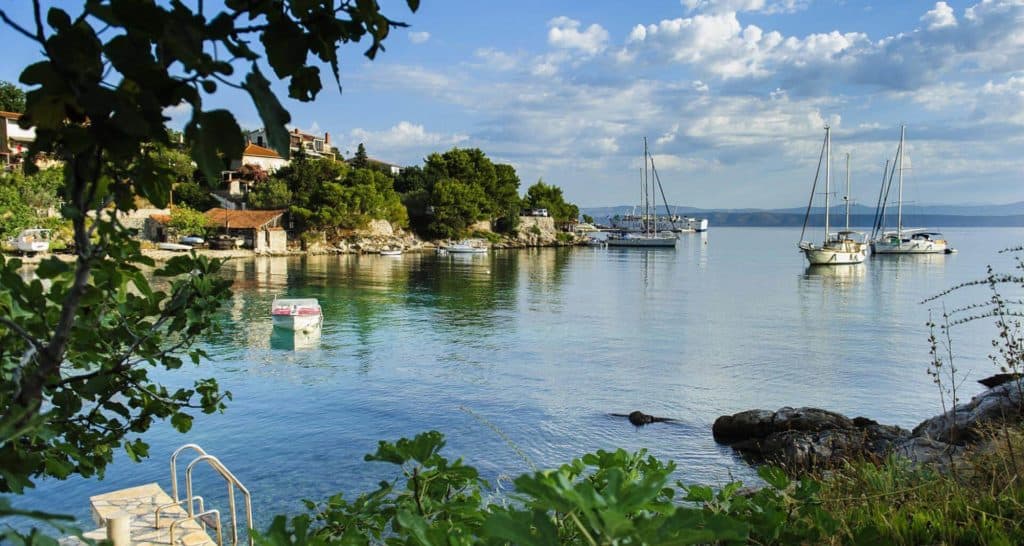
Rogac
Rogac is on the northern side of the island, i.e. in its most prominent part.
Its development dates back to ancient times, when it was a port for the island’s most important settlement, Grohote. Even today it is Solta’s central port and a starting point for an adventurous exploration of the island.
At the time of ferry arrivals and departures, Rogac is very busy with guests and islanders hurrying to reach their destinations, especially in the summer. Thanks to its amazing nature, beaches, central position and excellent road access, Rogac has become a destination of its own. It is an ideal choice if you wish to explore the entire island and surround yourself with exquisite beaches with crystal clear sea, nature, peace and quiet.
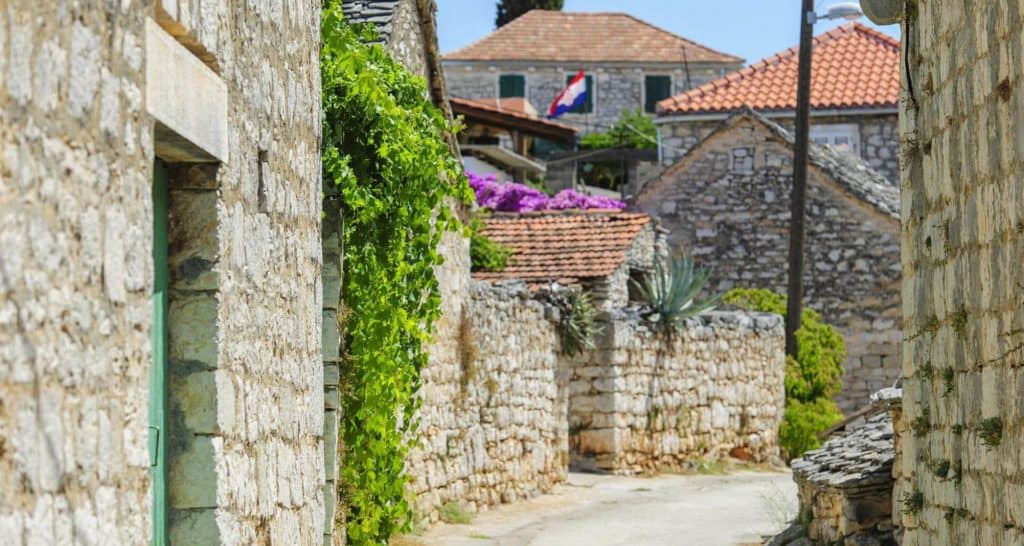
Srednje Selo
Srednje Selo is a tiny settlement by the road between Grohote and Donje Selo. It is on the mild slopes of the northern side of Sridnje polje.
According to the earliest historical records, it dates back to the Middle Ages. Unlike the majority of other island settlements, whose roots date back to the period of Antiquity. Today the smallest and the least populated settlement, it was once home to farmers, olive and vine growers who farmed the land in Soltansko polje stretching below.
Stone houses clinging one to another and the now abandoned village school witness the times when far more people lived here. Similar to other Solta settlements, its irregular stone-paved alleys form a number of dwelling units, among which Purtica Dvor and Lukin Dvor stand out for their remarkable environmental value.
Unfortunately, many interesting examples of vernacular architecture are dilapidated or have even fallen into ruin, so a thorough restoration of the abandoned and decayed houses is needed in order to preserve the original settlement.
Nevertheless, the village has a certain charm. Make use of a sunny day and take a walk or the biking trail from Grohote to Srednje Selo, pass through Donje Selo and go all the way to Maslinica.

Donje Selo
Donje Selo is a picturesque, typical Mediterranean hamlet by the main island road, near Srednje Selo.
Pay a short visit to the village on your way from Grohote to Maslinica or vice versa. Stroll through its stone-paved alleys and discover its secret corners. Today, it has an air of loveliness and simplicity due to a considerable number of stone houses.
We suggest you go for a walk or ride along the biking trail, an alternative route to Maslinica. Start from Grohote and pass through Srednje Selo and Donje Selo.
There is also a tiny road leading from the village to the beautiful bay of Donja Krusica. Its inhabitants once made a living from fishing and farming. Today, they mainly focus on producing olive oil and wine, while fishing became a hobby. With an increasing interest in tourism, Donja Krusica is gradually becoming a tourist destination that attracts more and more tourists each year.
The settlement dates back from the period of Antiquity. Numerous archaeological finds, such as the remains of a villa rustica, the walls of a rectangular building with a floor mosaic, discovered on the upland of Gradine, ancient stone mounds and graves, and the remains of the foundations of the early Christian church of St. Jela from the 6th century testify to the old times. The first historical records of the settlement date back to the beginning of the 16th century.
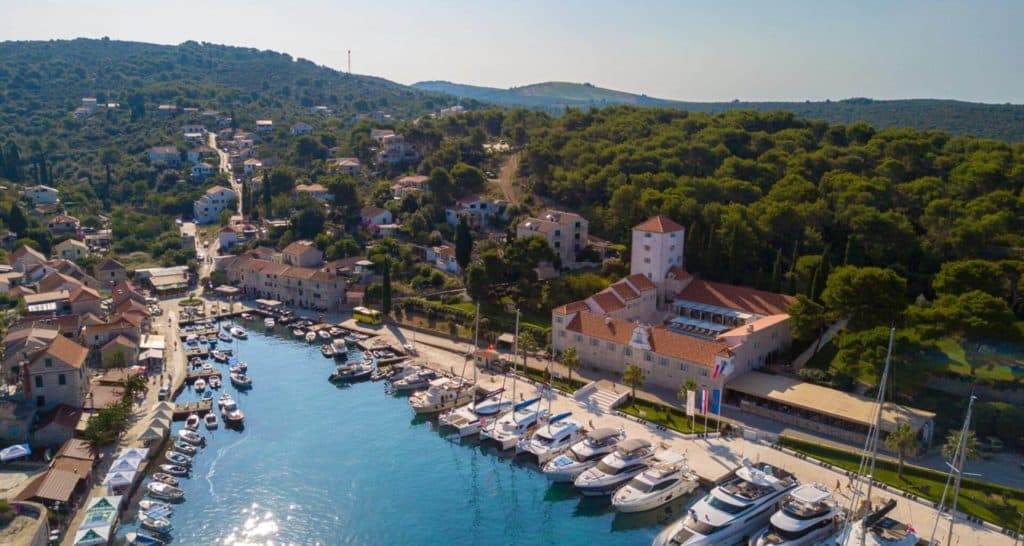
Maslinica
Maslinica is the only settlement and port on the west side of the island.
The south side of the bay boasts a beautiful pine wood with secluded rocky beaches. In front of it lies an archipelago of seven islets (Polebrnjak, Saskinja, Stipanska, Kamik, Balkun, Rudula and Grmej). These make Maslinica one of the most wonderful spots in the Adriatic. The beauty of the surrounding nature is in harmony with the historical, architectural and environmental values of the old castle and picturesque stone houses.
The settlement developed around the castle built by the noble family Marchi in 1708. Due to frequent pirate attacks, the Marchi brothers requested from the Venetian governor an approval to build a castle with a tower to defend the village. The family populated their estate with farmworkers from the regions of Dalmatian Zagora and Herzegovina, who were also engaged in fishing and seafaring. The family also commissioned the building of the church of St. Nicholas, located on the highest hill south of the bay.
Upon restoration of the castle and construction of a marina, the once small fishermen’s village gradually grew into a tourist and nautical centre of the island, welcoming more and more tourists and repeat guests each year. A 300-year-old castle is now a carefully refurbished heritage hotel. It offers individually designed luxury suites, with a helideck and an exquisite restaurant.
This is a great tourist destination for the lovers of the nature, unspoilt beaches and the crystal clear sea. Lately it is increasingly popular with cyclists, rowers, yachtsmen and divers. As well as with the aficionados of recreational fishing and hunting.
Adventure tourism in Maslinica
Adventurous tourists will surely go for a jet-ski ride, while those who prefer basking in the sun will go to the beautiful pebble beach or take a trip to the nearby Sipkova Bay, only to find a sandy beach there, the only one on the island! Kayaking to one of the islets is also a good idea – the view of the nearby bays, Trogir and Drvenik, from the Parish Church of St. Nicholas, is quite rewarding, but we are sure that the view of the sun setting behind the islets in the sea like gems will leave you breathless!
Those who prefer to stay on the coast can explore the biking/hiking trail connecting Maslinica with Donje Selo and Srednje Selo. You can also visit the nearby Šešula Bay, whose geographical position and deeply-indented coastline make it a safe mooring site. There you can try local specialties for a unique gastronomic experience.
In 2012 Maslinica received a national award for the best tourist destination in the Adriatic with less than a thousand inhabitants, as an acknowledgment of its intact natural beauty and tourist achievements and in 2017 Maslinica received a national award as the best Authentic Coastal Destination!
Where to stay on Solta
If you are going to have just one hotel on an island, and one which has just 7 rooms, you need to make sure it is the very best. Meet Martinis Marchi in Maslinica in their own words:
Welcome to Martinis Marchi Hotel & Restaurant in a historic castle in Maslinica on the island of Solta’s west coast. It is a place which vividly evokes visions of sparkling teal waters and a landscape dotted with olive trees. Today, after three centuries of tumultuous history, the Martinis Marchi castle welcomes you into its chambers that echo with the soft whisper of times gone by. The staff of the castle wishes you a pleasant stay.
At the Martinis Marchi castle, the comfort of our guests is our priority. After all, we offer just seven suites in a castle covering an area of 1500 square metres! Here every room has its story and its history, as well as a breath-taking view. Every piece of furniture has been chosen with care. Beds, wardrobes, tables and chairs come from European cities like London, Vienna, Venice, Paris, Zagreb and then meticulously restored, just like each detail of the castle itself.
Private accommodation is available through the usual channels, and campers should head to Stomorska and Kamp Mido.
Where to eat on Solta
If you are looking for the best dining experience, head to Martinis Marchi, whose 5-star hotel quality extends to the restaurant and beyond.
For those on more modest budgets, Solta has a good range of traditional Dalmatian restaurants, with an emphasis on seafood, given its island location. For the latest reviews on what is hot and what is not, click here.
Things to do on Solta
In addition to Solta’s famous wine, honey and olive oil (see below), there is plenty to keep you entertained on the island when you fancy a break from another hard day at the beach. Among the highlights:
Sailing
With the marinas in Rogac, Stomorska and Maslinica you can choose your starting point to explore the island and continue your sailing towards other Croatian islands. Even though it is not on the mainstream sailing map, Solta is proud of its 24 bays.
Biking
Bike routes on Solta lead from Maslinica to Stomorska on the alternative macadam road. This is actually mountain bike route and it goes via Donje Selo, Srednje Selo and Grohote with a detour to Necujam (Piskera bay) and finally ends in Stomorska. This route is perfect for a bike ride along olive tree groves and dry stone fields (and numerous japjenice) overlooking the sea.
Diving
The island, with its beaches and bays, offers some quite interesting diving locations where one can explore spectacular sea life and even various artifacts from ancient times such as shipwrecks and an original Roman wall. The most popular diving destinations are Livka, Stračinska, Senjska and Jorja bay. On all four locations you can find gorgonians and coral reefs while diving. In addition, Jorja and Senjska have underwater caves. On several different locations – next to Mrduja islet, Stomorska and Maslinica islets, you can find the shipwreck; while the Roman wall is hidden in Piskera.
Klapa festival in Donje Selo
Klapa is well known a capella singing protected by UNESCO and Donje Selo hosts an annual klapa festival. This festival takes place every summer and brings together different Dalmatian klapa singers from Split, Kastela, Trogir, Brac, and Korcula. The locals are especially proud of their female klapa called Cuvite.
Ostrich farm
Even though the ostrich is a bird native to Africa, you can find a whole ostrich farm on Solta near Gornje Selo. Go to the estate and see how well did the ostrich adapt to life on the island. This can be a good stop on your bike route.
The house of Marko Marulic in Necujam
Necujam is a little coastal town famous for the biggest and longest beach on the island. Its long bay which is actually a range of several bays well known in Roman times. Six centuries before the current huge tourism boom, Necujam was a place of inspiration for famous Croatian writer and poet – Marko Marulic – the father of Croatian literature.
The story says he spent time here and created some of his greatest works. He would probably stay there longer if it weren’t for pirates’ attacks. Another famous poet Petar Hektorovic spent his time here too. This proves Necujam was always a place of inspiration for the artists as it is today a host to different literature and art workshops.
Medieval archery
You can enjoy a medieval archery course in Maslinica at Oliveto archery club. This interesting sport will show you a great combination of old traditions and sport. The archery club offers a range of medieval arms and modern archery. The trainer and the members of the club will teach you how to use a bow and arrow and make your stay even more memorable. The club is located in the pine tree forest in Maslinica and is a great way to spend an active holiday.
Wine on Solta: Meet Dobricic
Solta is home of authentic wine variety called Dobricic. It was almost extinct and then revitalised by passionate locals in 2005. Scientifically proven, Dobricic and the original Zinfandel, aka Crljenak Kastelanski, are parents of the most popular wine sort in Dalmatia – Plavac Mali.
Dobricic is dark red wine with a purple hue. It has been on Solta since ancient times. Dobricic is the main wine variety that grows on the island and is produced by local agricultural estates and vineyard owners.
Locals cultivate their vineyards in combination with olive tree groves as well as with several fig trees in order to keep the insects away. The grape harvest starts at the end of August and stretches to mid-September. To find out how the spouse of Zinfandel taste likes, check out local agricultural estate that offers Dobricic wine tasting.
The olive oil of Solta
Solta is an island famous for its olive trees and olive oil making traditions. The olive groves date back to Greek times and the Greeks are the ones who probably brought the olives from Greece. Based on several theories, wild olive trees could be found on the island even before the Greeks.
The fact is Solta has the olive trees older than 1000 years. The olives are only oily fruit which can be extracted manually without any special technology and therefore were essential part of nutrition centuries ago.
The olive tree groves belong to local families who dedicate their time to nurture and grow olives. Sometimes the groves are quite small and count around a dozen trees. The olive varieties that grow on Solta are Oblica and authentic Soltanka or Levantinka.
The first one does not require a lot of water while Soltanka needs more water and fruitful soil in order to grow, but it rewards with a better crop. The harvest takes place from mid-October to the end of November and it is an important occasion for family and friends.
Every olive is handpicked, placed in a basket and then cold processed in the olive mill. In order to have extra virgin oil, the earlier the processing, the better final product will be. To see why Solta olive oil is so special, visit a local olive mill and enjoy olive oil tasting.
Honey heaven
The island is famous for its honey made from wild rosemary. Locals know it as Olintio, and it has been in use from ancient times.
There is written evidence about honey from Solta and its healing attributes from the same period. Along with wine and olive oil making, beekeeping and honey production is one of the oldest traditions of the island.
The beekeeping cooperative was founded in 1875 and even the French had the special committee which was working on evaluating the hone. The French and the Italians have pronounced Solta honey one of the best in the world. Nowadays there are several beekeepers and one of them offers workshops and honey extracting process presented to the public. To see the honey extracting process, visit a local beekeepers farm.
Solta gingerbread
This aromatic gingerbread cake has different variations and it is available on different Dalmatian islands. On Solta, this tradition has existed for 500 years. The tradition of gingerbread making originates from the women who prepared it to their sailor husbands who brought back home exotic spices required for flavouring the gingerbread.
Gingerbread had the purpose of predicting weather conditions, or so they believed – when crispy the weather will be sunny while when tender the weather is rainy. The ingredients in making of gingerbread are local ecological products like honey, extra virgin olive oil, carob and sherry.
Mrduja and the tug of war with Brac
This event stands for a silent war between two neighbouring islands, Solta and Brac. They are only 800 m away but a years-long dispute about tiny islet of Mrduja is the reason for this event – who does it belong to. Sadly for Solta, it does administratively belong to Brac but each year both Solta and Brac will fight over it. The story says the islanders couldn’t decide who does the island belong to and that is the reason why they tied a rope and pulled Mrduja from one side to another. This annual event is called “Tugging of Mrduja”.
It is followed by different events, live music and folk feasts both on Brac and Solta. The central event is held during the afternoon where the boats from both islands gather around Mrduja, tie the ropes and are trying to pull the island towards them. The winner is the side which pulls the rope (and the island) more towards them. This event started to take place in 2008. and is traditionally held every year during last weekend in July. Check the Mrduja tugging in the video here:
Legend of Queen Teuta and her fort in Senjska bay
The history of Solta dates back to Neolithic times, but the first known legends are connected to the Illyrian tribe Delmati and Queen Teuta, who according to the legend had the castle above the Senjska bay, and its ramparts can still be seen.
Her castle was called Mir (Peace), and it was a place where one could find inner peace and strength. There is also a theory that the queen had a hidden treasure in the area. The locals are familiar with the legend – if the fishermen would want to ask the queen something, they always need to return the first caught fish to the sea.
Cuvita owl
The Cuvita owl presents a true symbol of Solta – it is a species on Solta island and is often a motif on different souvenirs. Cuvita is actually a small owl and people of Solta take their name from it – Cuvitari. Before this was the name for the locals when somebody tried to make fun of them and nowadays is symbol of pride and almost a trademark for the island.
For more information
You can visit the official Solta Tourist Board website here.
Tourist board of the island Solta
Podkuca 8, 21430 Grohote
+385 (0)21 654 657
[email protected]
For the latest TCN news from Solta, visit the dedicated page.

